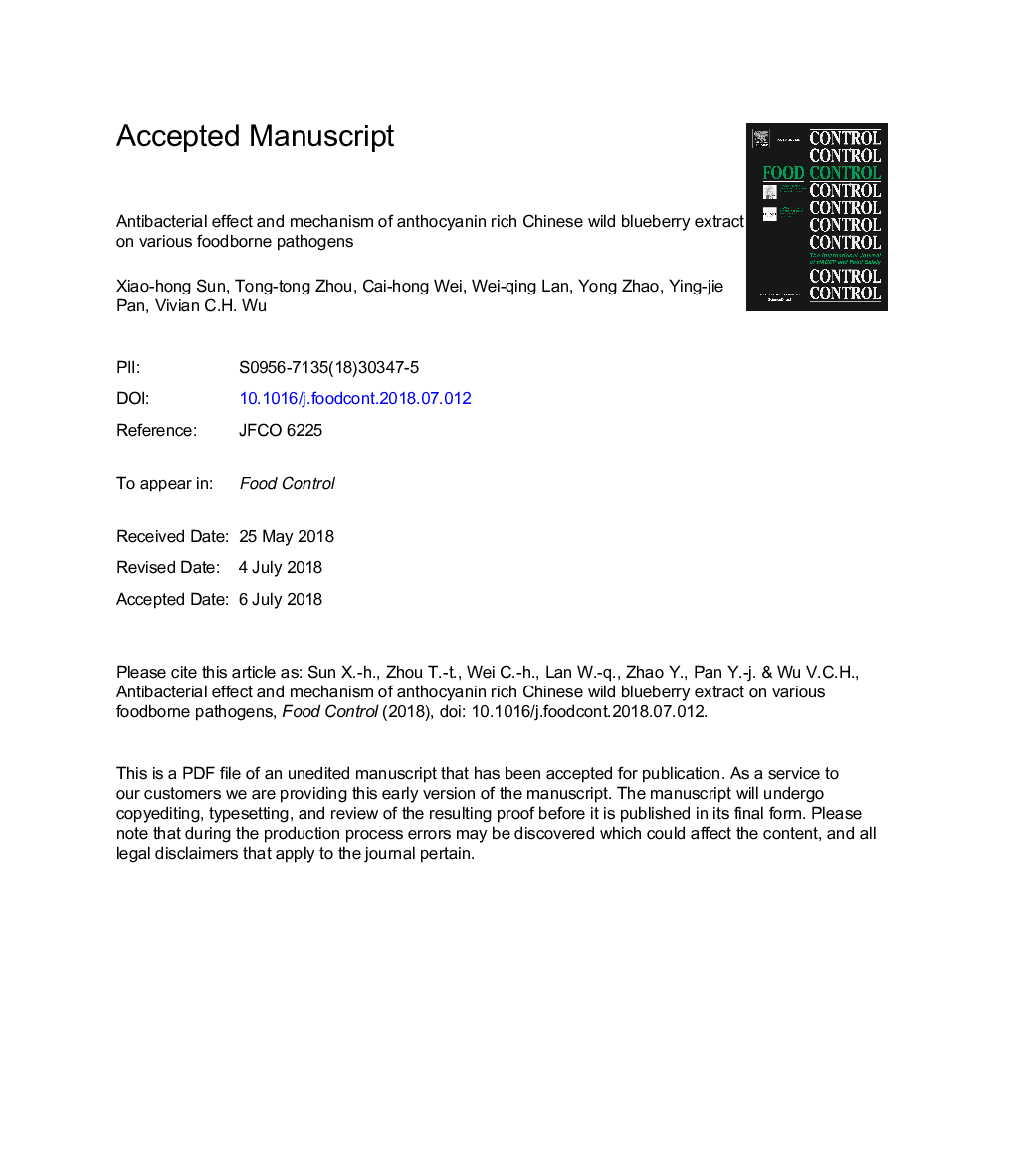| Article ID | Journal | Published Year | Pages | File Type |
|---|---|---|---|---|
| 8887728 | Food Control | 2018 | 34 Pages |
Abstract
Anthocyanins of wild blueberries were studied for the inhibition of the growth of Listeria monocytogenes, Staphylococcus aureus, Salmonella enteritidis and Vibrio parahaemolyticus. The inhibitory mechanisms of anthocyanins from Chinese wild blueberries were also evaluated. Vibrio parahaemolyticus was the most susceptible to anthocyanins with the lowest MIC/MBC for each treatment, followed by St. aureus. After a treatment of anthocyanins, the membrane permeability and metabolism of four pathogens were assessed. The whole protein content and the activity of alkaline phosphatase, adenosine triphosphatase and superoxide dismutase were measured by several protein assay kits. When foodborne pathogens were treated with anthocyanins for 2â¯h, the nucleic acid leakage and protein releaseincreased, which demonstrated that anthocyanins could destroy the cell membrane. Furthermore, the whole protein content and enzyme activity decreased after treatment. With an increasing concentration of anthocyanins, the production rate of formazan by L. monocytogenes, St. aureus, S. enteritidis, V. parahaemolyticus decreased by 55%, 71%, 67% and 79%, respectively. This inferred that the TCA cycle was decreased, reducing the energy transfer of pathogens thus inhibiting their growth and reproduction. The strong antimicrobial effect of Chinese wild blueberry anthocyanins provides application potential in the field of food safety.
Related Topics
Life Sciences
Agricultural and Biological Sciences
Food Science
Authors
Xiao-hong Sun, Tong-tong Zhou, Cai-hong Wei, Wei-qing Lan, Yong Zhao, Ying-jie Pan, Vivian C.H. Wu,
